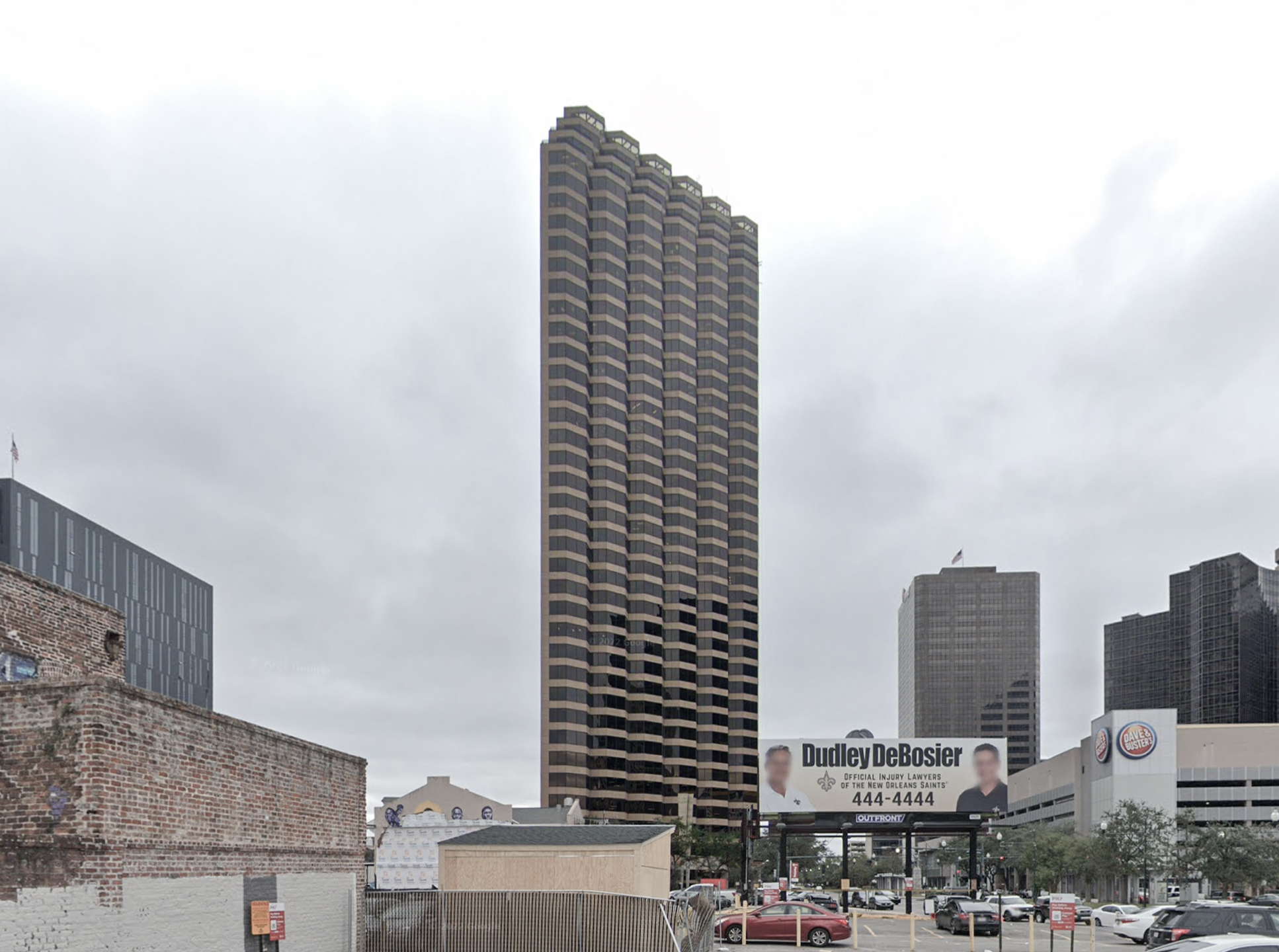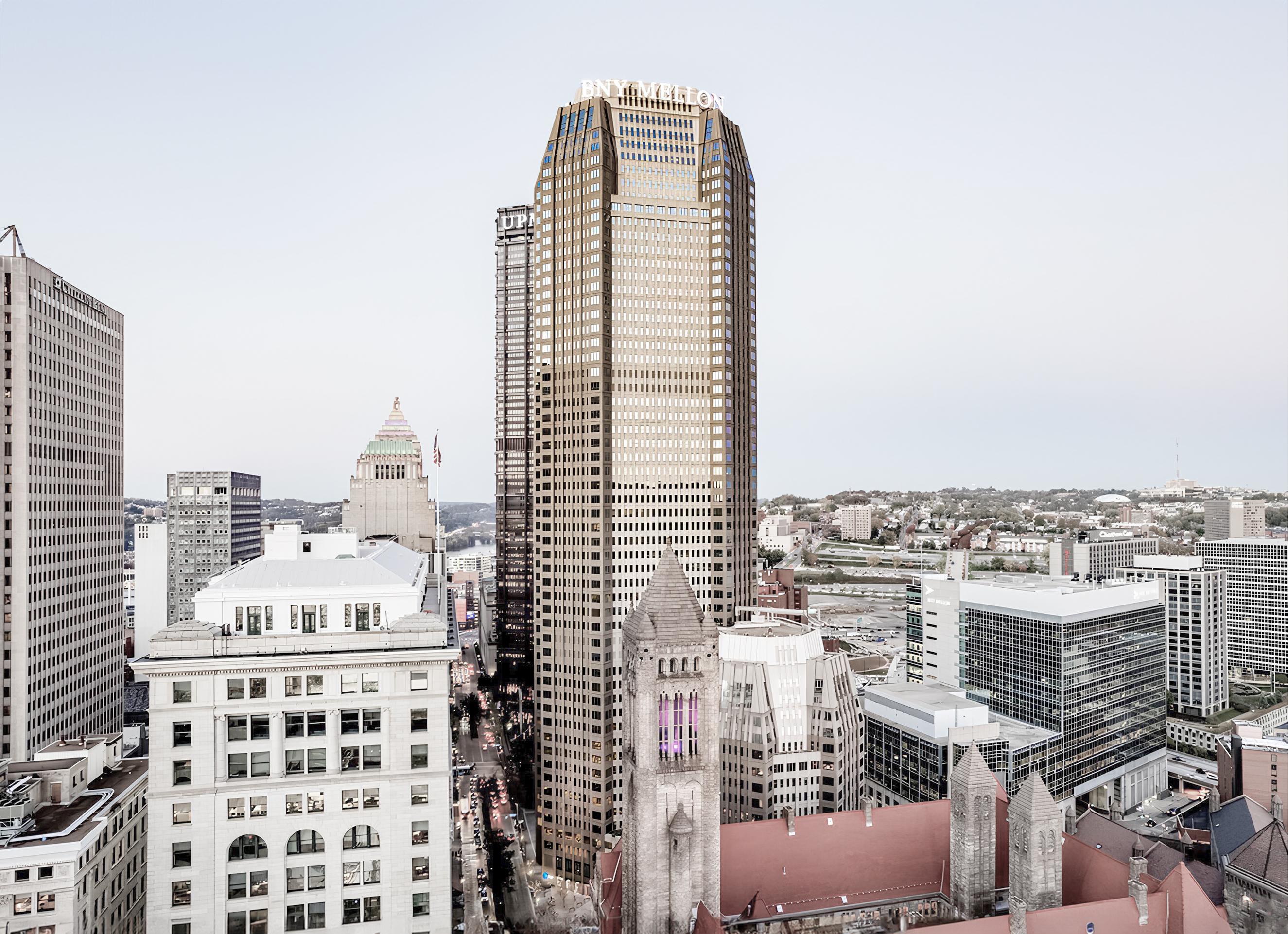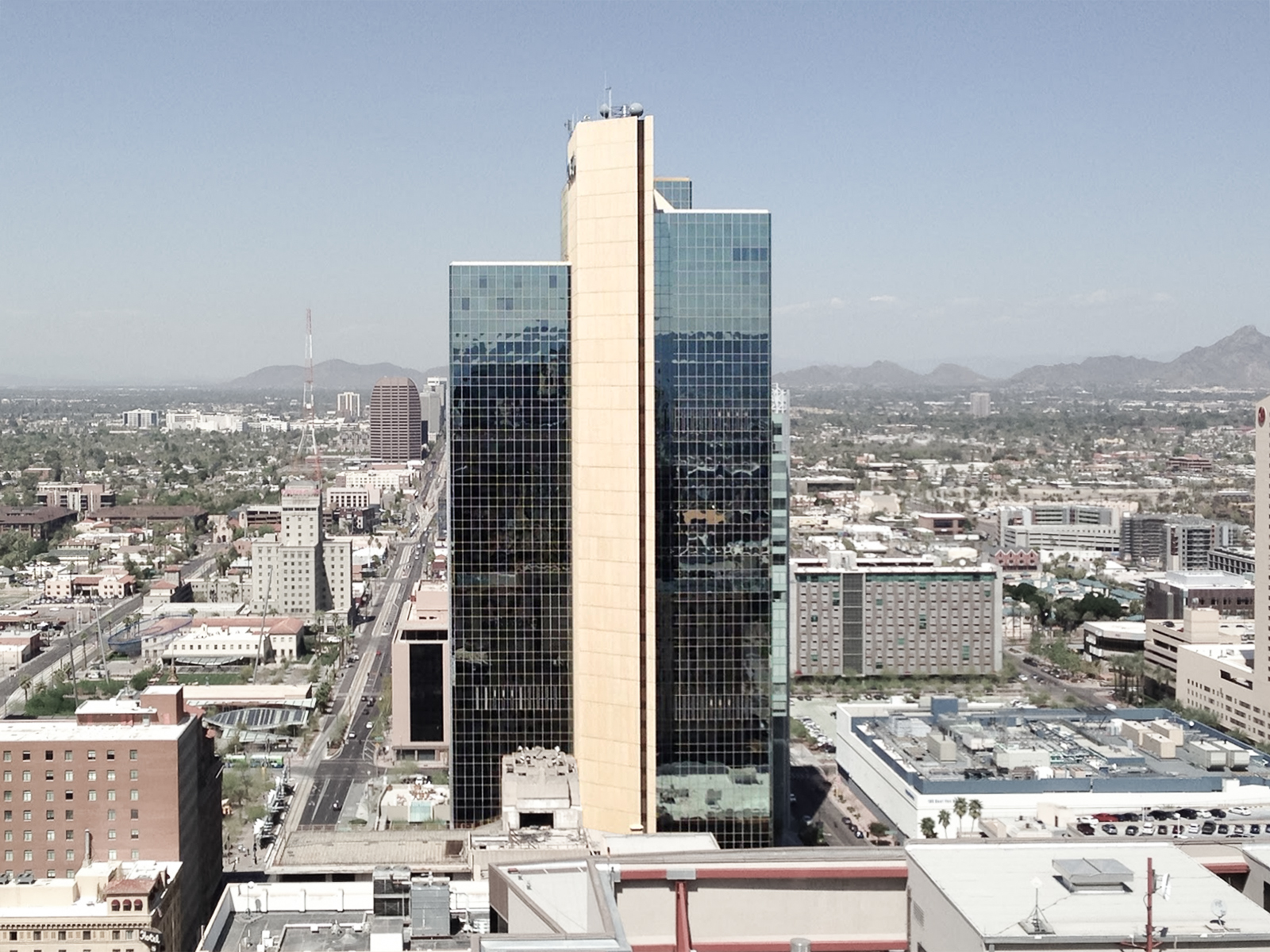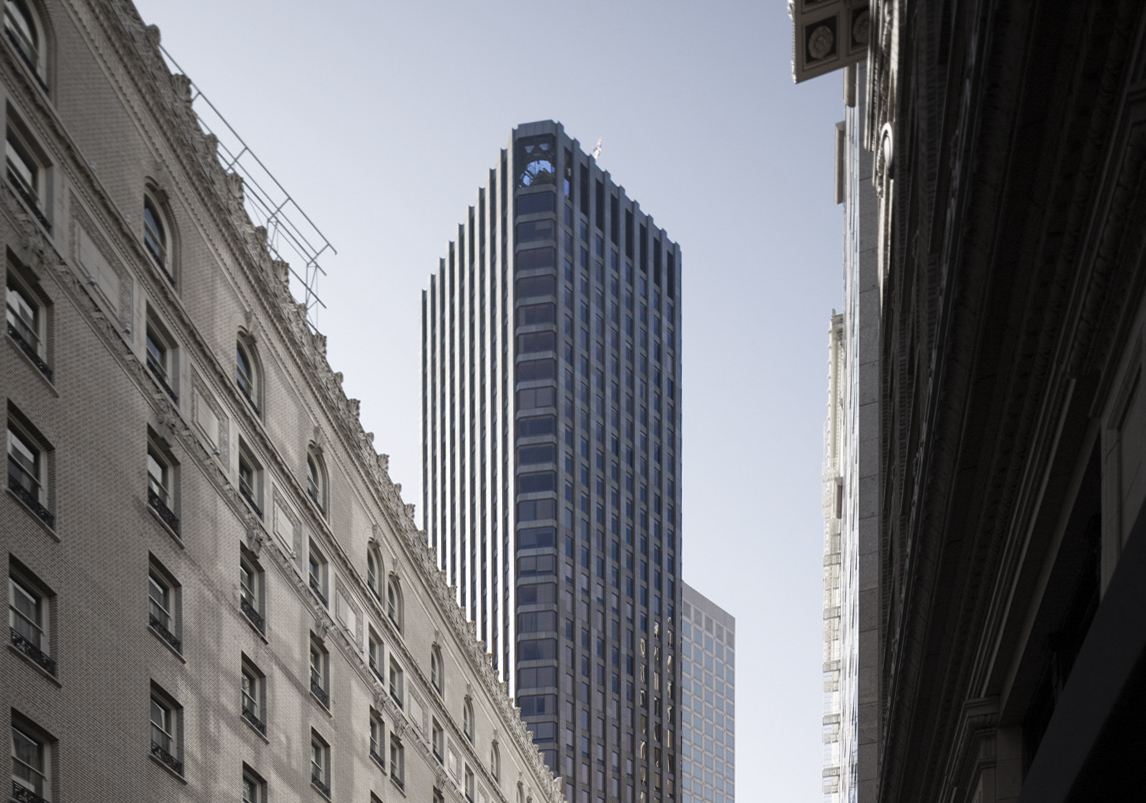The First Bank and Trust Tower is a Postmodernist skyscraper designed by Welton Becket & Associates, and built between 1985 and 1987 in New Orleans, LA.
First Bank and Trust Tower is not the only name you might know this building by though. It is common for companies to want to attach their names to iconic buildings when they move in, or for the general public to come up with nicknames, and this one is no exception. The building has changed names several times over the years, and is also known as:
- LL&E Tower between 1987 and 0.
- BankPlus Tower between 2022 and 0.
- 909 Poydras Tower.
Its precise street address is 909 Poydras Street, New Orleans, LA. You can also find it on the map here.
The building underwent a major restoration in 2005.







